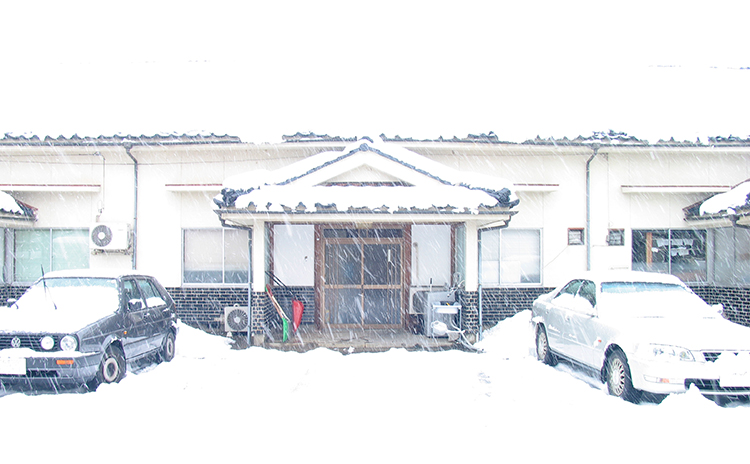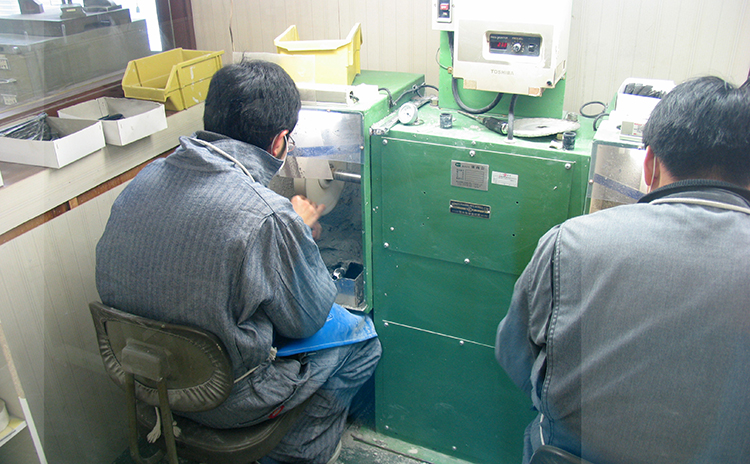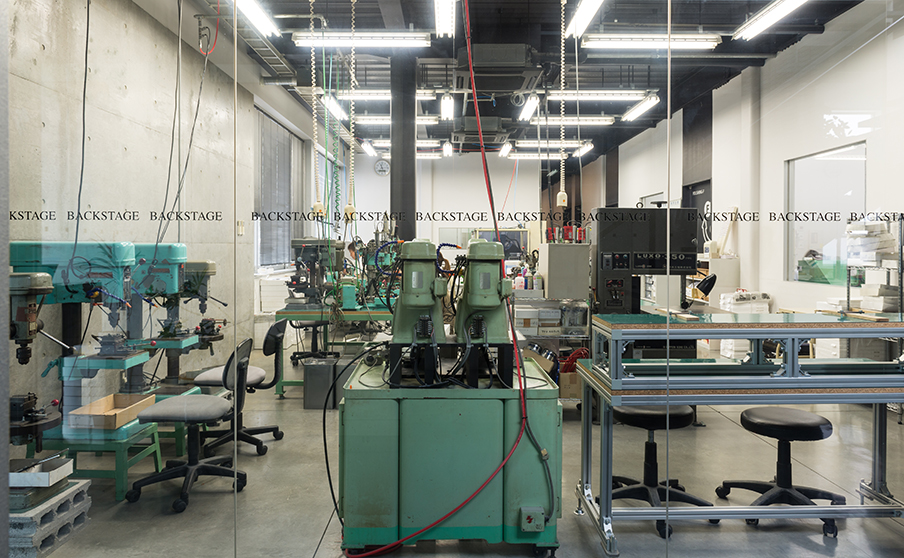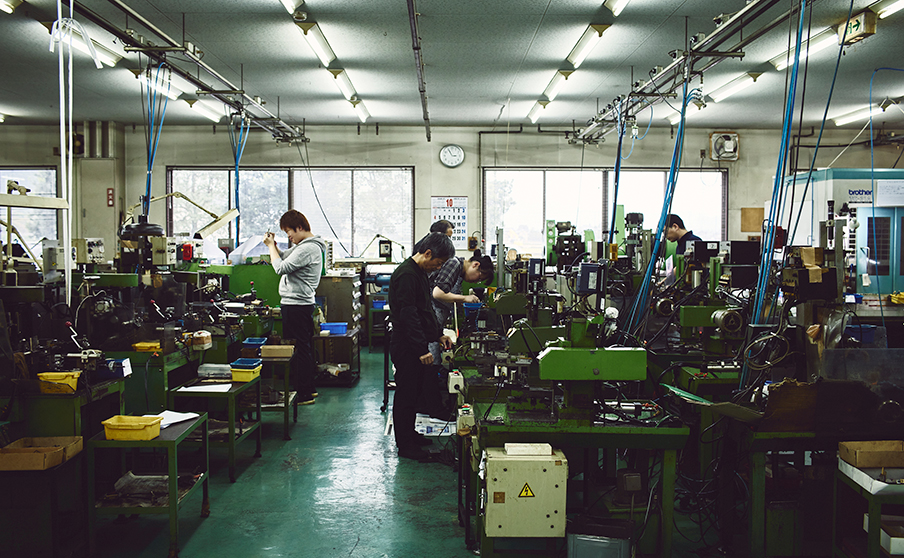Kaneko felt no sense of accomplishment, despite his expansion of the craftsmen brand series and the new opportunities created by expanding the network of company owned stores - instead he felt a sense of crisis.
Manufacturing sovereignty had been lost to China, orders were decreasing, and factories in the region faced crisis. Even more serious was the lack of workers and successors, not to mention the aging of the craftsman population. Everyday his head was filled with visions of crisis for the region.
Craftsman brands have become a solid foundation of KANEKO OPTICAL, and a source of pride. Made-in-Japan eyewear from the Sabae region has become a lifeline for all of us, and a strong principle of the company.
The superb craftsmen of this eyeglass making town awakened Kaneko to the excellence of artisanal manufacturing (monozukuri), but at the same time he feared for its future, so he adopted the survival of the Sabae artisan culture as his mission and went to work.


In 2006 he rented an abandoned building in a bankrupt eyeglass factory and started up a workshop that doubled as a training facility. At the time, company employees referred to it as "Kaneko's workshop." Here, at Kaneko's request, a solitary employee began to manufacture eyeglasses.
This was the first artisanal production in Kaneko Optical's history. We began from a state of total ignorance about handling materials like celluloid, or using machinery, or manufacturing know-how. One by one, we learned the basics from highly skilled artisans, and through repeated trial and error acquired a feel for the work. We struggled to establish an eyeglass production process capable of producing acceptable quality.
Staff from our stores and other young people seeking to become craftsmen gathered from around the country, and by the third year we had more than 10 staff. We were building a muscle memory for each of the many manufacturing stages, and in the most time-consuming polishing step, producing a finished luster unattainable by machine. The goal was to create a workplace capable of producing uncompromising quality by own hands.
When Kaneko saw that a stable technical and production capability had been achieved, he was ready to progress to the next stage of artisanal manufacturing.
In 2009 we completed construction of our industrial-grade factory for plastic frames, BACKSTAGE, on a 1400+ square meter (15,000 square foot) site. This has become our headquarters for artisans hard at work in manufacturing as well as planners and designers who challenge one another with new ideas in our design studio.
After hard times as wholesaler, KANEKO OPTICAL was finally achieved an integrated structure capable of its own planning, design, manufacture, and sales.
Real reform finally takes shape.
As KANEKO OPTICAL was pushing ahead with its manufacturing efforts, the artisanal production landscape in Sabae was steadily worsening. Starting in 2009, the power of low cost eyewear chains had been accelerating, propelled by cheap imported frames, primarily from China. Each year the foreign share of the Japanese market was rising, reaching more than 80% in late 2010.
Sabae, stripped of more and more of its market for plastic frames, was hit hard in metal frame manufacturing as well.
Metal frame manufacturing requires many more manufacturing steps than plastic frames, with each step supported by dedicated specialists in their own trades. The assault on the market from foreign-made frames and resulting decline in orders shook the Sabae system of specialized trades to its core. Business contractions and closures started in the lowest margin specialties, exposing the threadbare condition of the specialization system. Some specialties were reduced to only one or two companies, truly a calamity for the region's supply chain.
The situation produced a sense of crisis, but on the other hand the high investment in capital equipment needed to manufacture metal frames was a major barrier to KANEKO OPTICAL. Most people thought it would take at least 10 years after launch to become an effective producer. Kaneko worried as the Sabae region weakened each year. Then, one summer day in 2016, news arrived of a metal frame manufacturer struggling to find a successor and looking for someone to take it over.
While aware of the problems common to such companies, Kaneko decided to take over this business and integrate it as group company. He gave the company a new start, naming its metal frame factory GLASSWORKS. This was a long cherished ambition, but full of looming challenges. Suddenly the company found itself manufacturing metal frames.
KANEKO OPTICAL had now evolved enough to take on manufacturing of both plastic and metal frames, and in 2019 was ready to establish BASEMENT, its advanced manufacturing facility for next generation production. The search was on to meld digital and analog techniques. BASEMENT was not just a manufacturing site for KANEKO OPTICAL; it was a bet-the-company effort to create what in five to ten years would become the region's new infrastructure.
In the truest sense of the word, this was how the "reform" of Sabae imagined by Chairman Shinya Kaneko began to take shape.




Manufacturing sovereignty had been lost to China, orders were decreasing, and factories in the region faced crisis. Even more serious was the lack of workers and successors, not to mention the aging of the craftsman population. Everyday his head was filled with visions of crisis for the region.
Craftsman brands have become a solid foundation of KANEKO OPTICAL, and a source of pride. Made-in-Japan eyewear from the Sabae region has become a lifeline for all of us, and a strong principle of the company.
The superb craftsmen of this eyeglass making town awakened Kaneko to the excellence of artisanal manufacturing (monozukuri), but at the same time he feared for its future, so he adopted the survival of the Sabae artisan culture as his mission and went to work.